We’re one day away from the highly anticipated 2023 FIFA Women’s World Cup Final, where Jorge Vilda’s Spain will take on the reigning European Champions, Sarina Wiegman’s England.
The path to the big game in Stadium Australia has not been an easy one for either side, with both demonstrating a keen ability to overcome setbacks in order to earn their place in Sunday’s showcase.
On one hand, Spain have had to contend with managing star player Alexia Putellas’ minutes on her return from injury and had to mentally deal with a 4-0 thrashing in their final Group C clash versus a formidable Japanese outfit.
Meanwhile, on the other hand, England have had to tactically adapt throughout the competition, mainly due to Keira Walsh’s injury sustained versus Denmark, which ruled her out of the Lionesses’ subsequent game versus China but also due to a two-game suspension for Chelsea’s dynamic attacker Lauren James.
Both Vilda and Wiegman can be proud of themselves and their respective teams’ efforts to overcome all obstacles, and the stage is now set for a box office clash on Sunday. Our tactical analysis will provide a tactical preview of some key battles to watch out for as the two European goliaths face off in the World Cup Final.
Potential lineups
First and foremost, before providing our analysis of the strategies and tactics of the two teams, we’ll take a look at how they may line up and who we can expect to take to the field.
For Spain, we can reasonably expect they’ll line up in a 4-3-3 shape with one holding midfielder, as this has been Vilda’s general way of setting up his side throughout the tournament.
Cata Coll will likely start between the sticks for La Roja behind a back-four potentially consisting of right-back Ona Batlle, right centre-back Irene Paredes, left centre-back Laia Codina and left-back Olga Carmona — who scored the winning goal for Vilda’s side in the semi-final versus Sweden.
We anticipate Real Madrid’s Teresa Abelleira to start at holding midfield just behind the Barcelona duo of Aitana Bonmatí and Alexia Putellas, while Jennifer Hermoso could lead the lineup top with Alba Redondo (right) and Salma Paralluelo (left) potentially starting on either side of her.
Expect Mariona Caldentey and Esther González also to feature and potentially start in the attacking positions, however. Impact substitutes have been vital to Vilda’s team and their progress throughout the tournament, and England will need to be prepared for various threats on Sunday.
On the opposite side, we expect Wiegman to stick with the 3-4-1-2 shape she settled into from the China game on following Keira Walsh’s injury, as previously mentioned. Even after Walsh’s return, Wiegman has preferred this shape for the entirety of the knockout stages due to the way it allows for the ball progression workload to be spread a bit more easily and helps highlight Manchester City star Alex Greenwood’s passing ability.
Mary Earps will start in goal for Wiegman’s side behind a back three of Greenwood (left), Millie Bright (centre) and Jess Carter (right). Ahead of them, in a four-player midfield, we expect to see Walsh and Georgia Stanway line up in the centre, with Rachel Daly (left) and Lucy Bronze (right) on either side of them.
The big question mark in terms of team selection is whether Wiegman sticks with Manchester United’s Ella Toone in the ‘10’ position or goes with the returning Lauren James following the end of the latter’s suspension.
Toone has done a fine job in James’ absence, but it’d be a big call to overlook the 21-year-old Chelsea star’s quality, and we’d lean towards putting her back into the starting XI for the final.
Lastly, we will likely see Lauren Hemp and Alessia Russo lead the line for the Lionesses, with the front two having developed a fruitful partnership from the switch to 3-4-1-2.
Spain in possession vs England out of possession
We’ll kick off our tactical analysis by looking at how we can expect Spain to approach this game in possession and, simultaneously, how England will attempt to combat them without the ball.
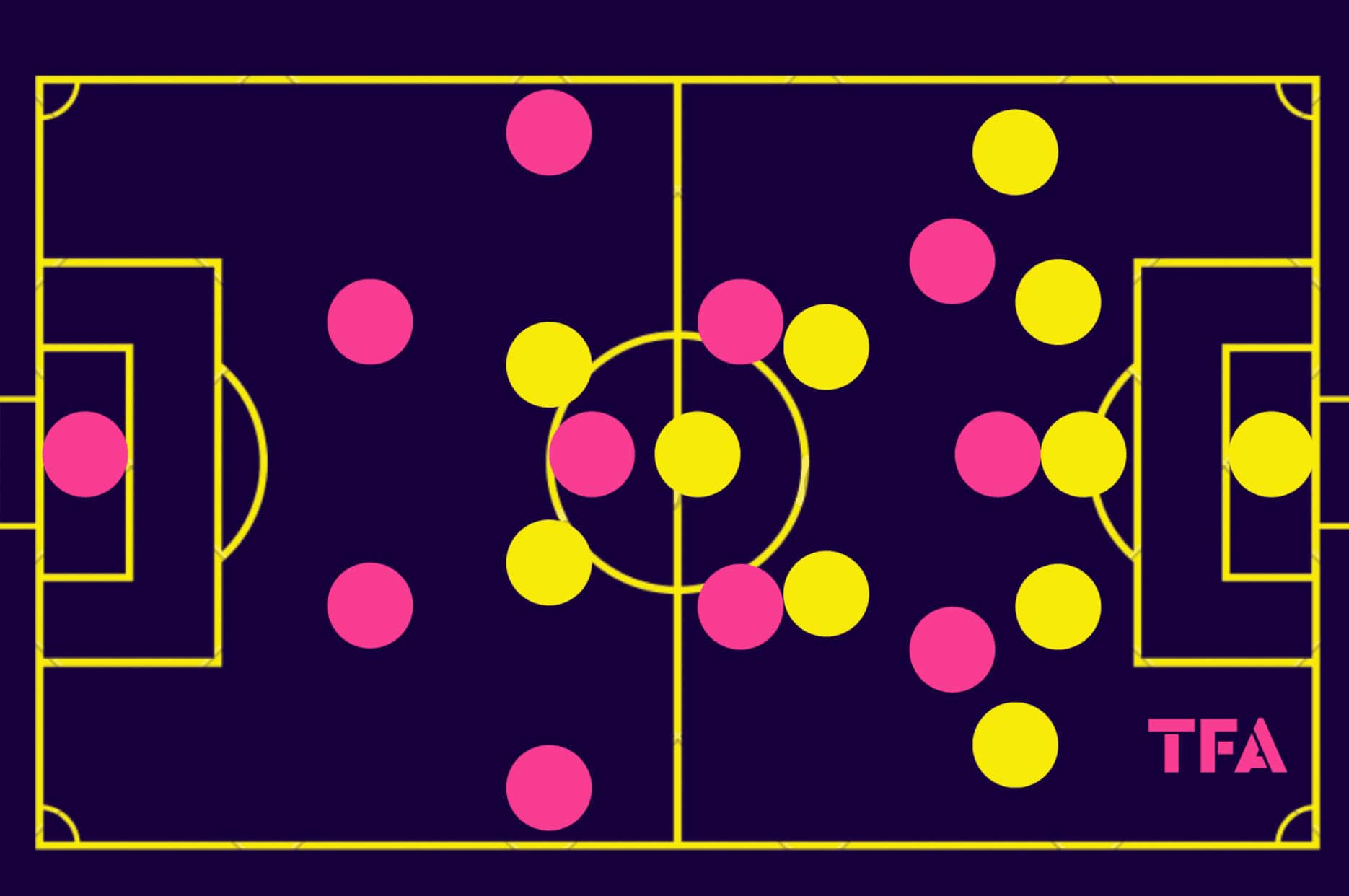
Firstly, figure 1 gives us an idea of how we can broadly expect this matchup to look, with Spain being represented by the pink dots and England by the yellow.
England’s front two will look to screen passes into Abelleira while closing down the centre-back in possession. We can expect the ball-far forward to get tight to Abelleira as the ball-near forward presses the ball carrier while trying to keep La Roja’s holding midfielder in her cover shadow as the Lionesses defend in their mid-block.
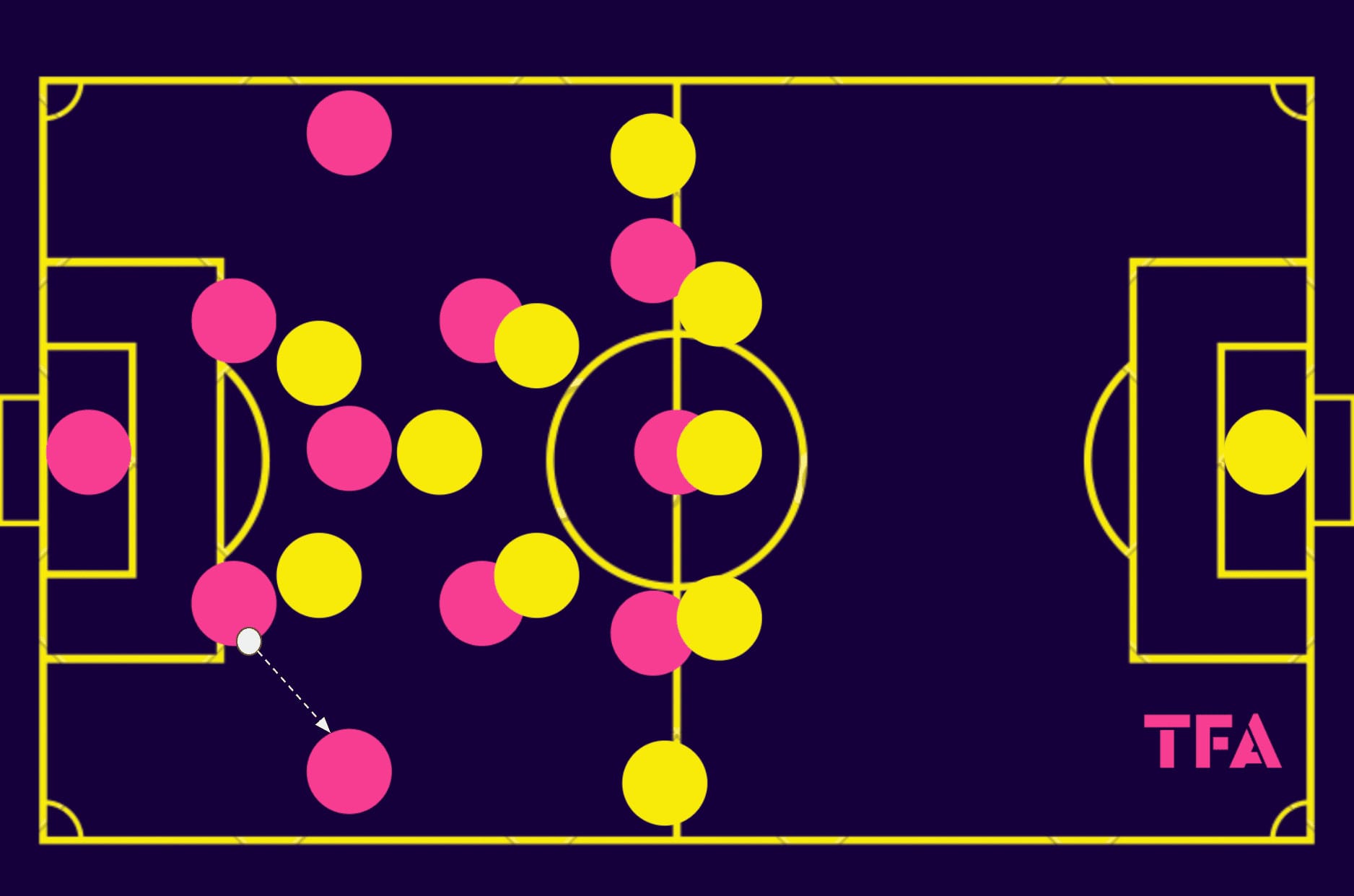
However, England like to press very aggressively, and we could also expect to see plenty of occasions where the ‘10’ will take responsibility for Abelleira as the two forwards commit to pressing Spain’s central defensive duo player-to-player.
The battle for control in the middle of the park is going to be very interesting to watch in this game, with both teams possessing some skillful ball players in central midfield and likely aiming to build through them any chance they get.
Both sides will be well aware of the opponents’ intent to do this, though, and will likely set up well to deal with it. This could result in a very congested midfield throughout the contest, as we see in figure 2, with no space for the team in possession to progress through the centre. As a result, we can expect plenty of ball progression to occur through the wide areas.
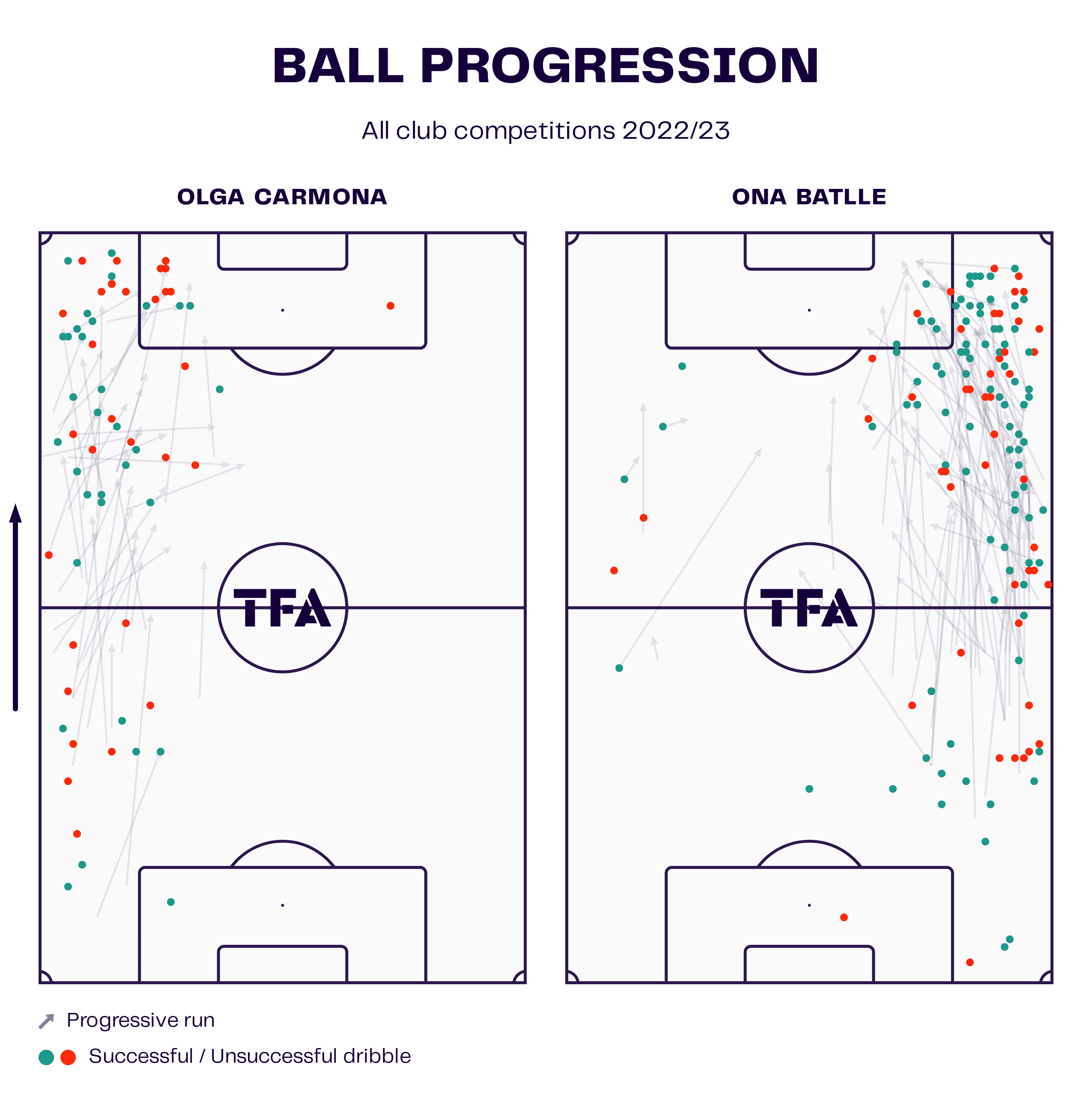
Spain’s full-backs, potentially Carmona and Batlle for this game, have demonstrated a tremendous ball-carrying ability throughout the tournament and last season with their respective club sides, as figure 3 depicts.
In the World Cup, Batlle has represented one of the tournament’s most frequent dribbling threats, and she’ll be looking to use her bravery, pace and dribbling technique to attack Rachel Daly and Alex Greenwood down the wing.
Wiegman will, of course, be prepared for this threat, but England’s priority will be to prevent Spain from accessing the centre, meaning we can expect them to enjoy some space and opportunities to progress via the wings.
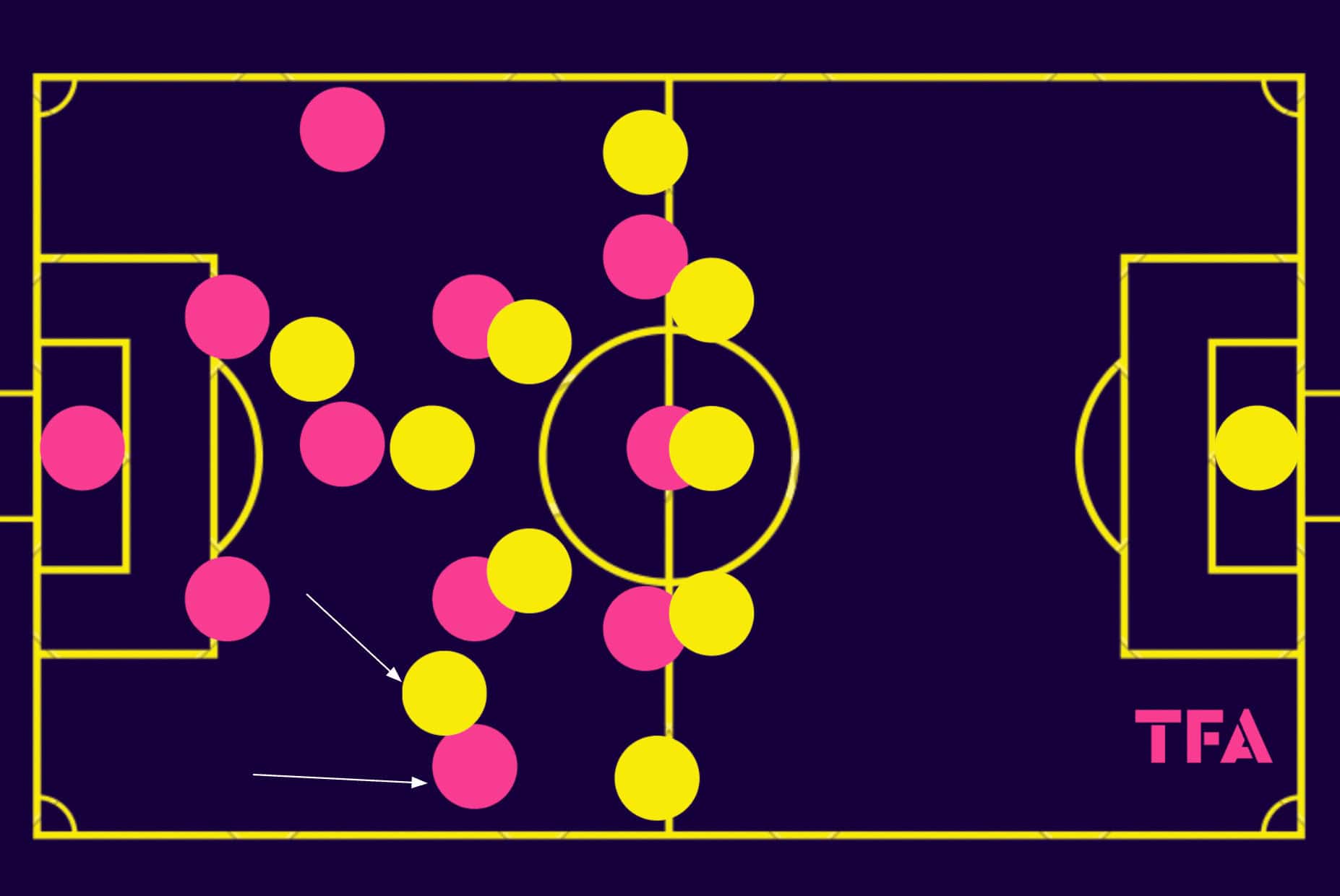
England’s forwards will be expected to relentlessly track back and follow Spain’s full-backs as they receive in space out wide to prevent the wing-back from getting dragged away and thus leaving the centre-backs 1v1 with Spain’s devastating dribblers up front.
Greenwood, Bright and Carter are capable of handling themselves in 1v1 duels, but Wiegman will not want to put them in that situation if she can help it, more just rely on their 1v1 defending ability if they have to.
Preventing the wing-back from being dragged upfield and allowing them to remain closer to the centre-backs by dropping the centre-forward back in defence is a tactic we’ve seen the Dutch coach utilise with this team in this tournament. We feel it’d be a sensible move for the Final as well, though it will require significant energy from the forwards.
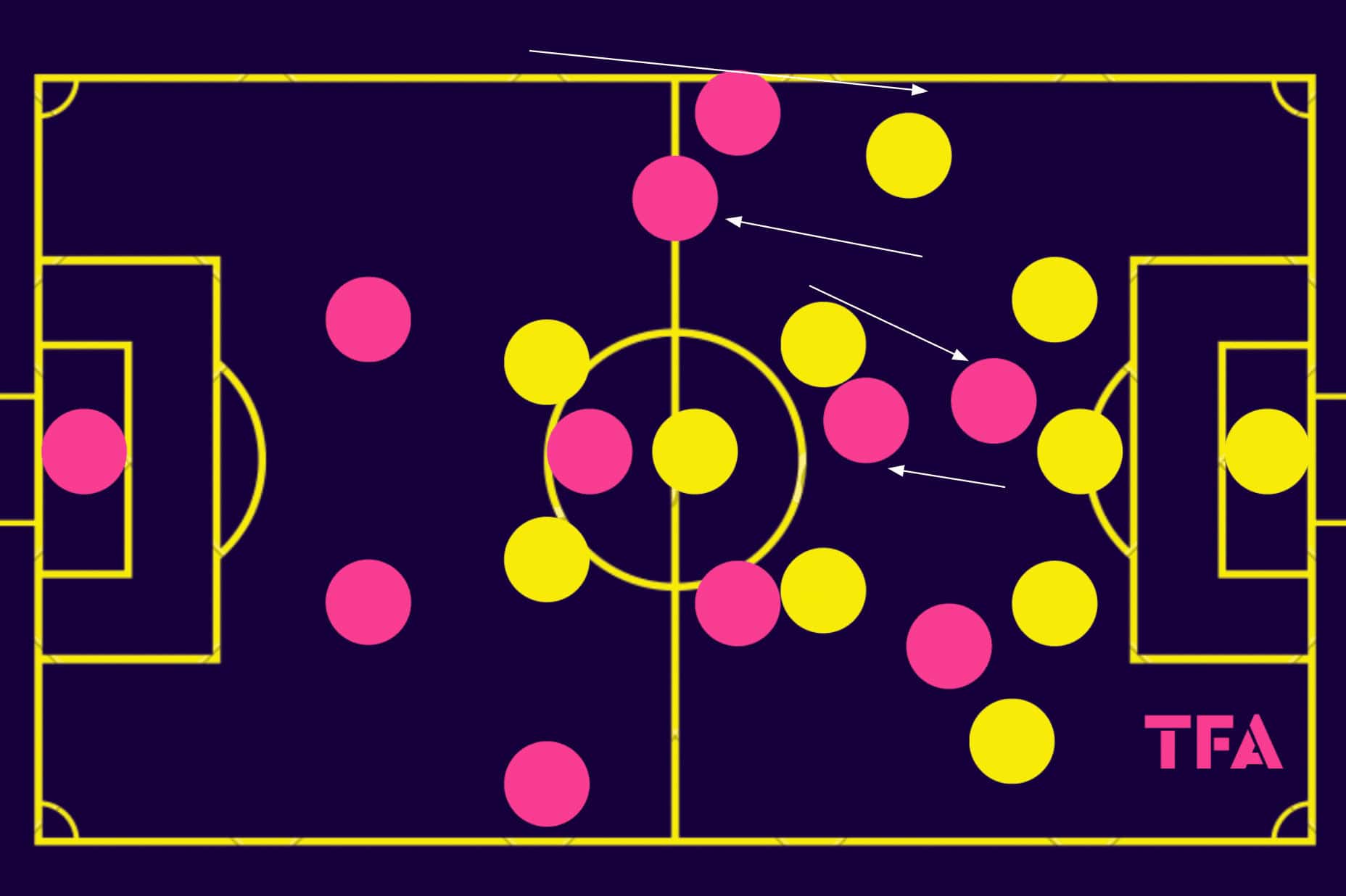
Other ways Spain can try to manipulate England’s defence to create overloads involves the dynamic movement La Roja constantly display in the progression and chance creation phases. This team is very fluid, with midfielders and attackers extremely comfortable rotating into different positions and roles with the aim of losing their marker and finding some freedom in a dangerous position.
Figure 5 shows an example of Spain’s winger dropping as the full-back overlaps — a ubiquitous sight in this team — as well as the centre-forward dropping for the central midfielder to advance, an action that we see Putellas and Hermoso carry out quite a lot.
The link-up between the full-back and winger, in general, will be crucial to Spain’s possession play; expect to see underlaps and overlaps from the full-backs as the wingers receive to feet, aiming to generate some space to get on the ball and create as the dangerous full-backs advance into higher positions.
Hermoso’s movement will give the English centre-backs a dilemma throughout the game in terms of whether they should follow her as she drops to prevent her from receiving between the lines or whether they should focus on avoiding gaps from opening up in the backline — having three centre-backs may help with this to an extent, but they must be aware of the likelihood Putellas advances to take her place up front and will aim to occupy any gaps she can exploit; she doesn’t need a tonne of space to make something happen in the final third.
England in possession vs Spain out of possession
Moving on, our next section of analysis will focus on England’s threats in possession and how La Roja will try to tame the Lionesses without the ball.
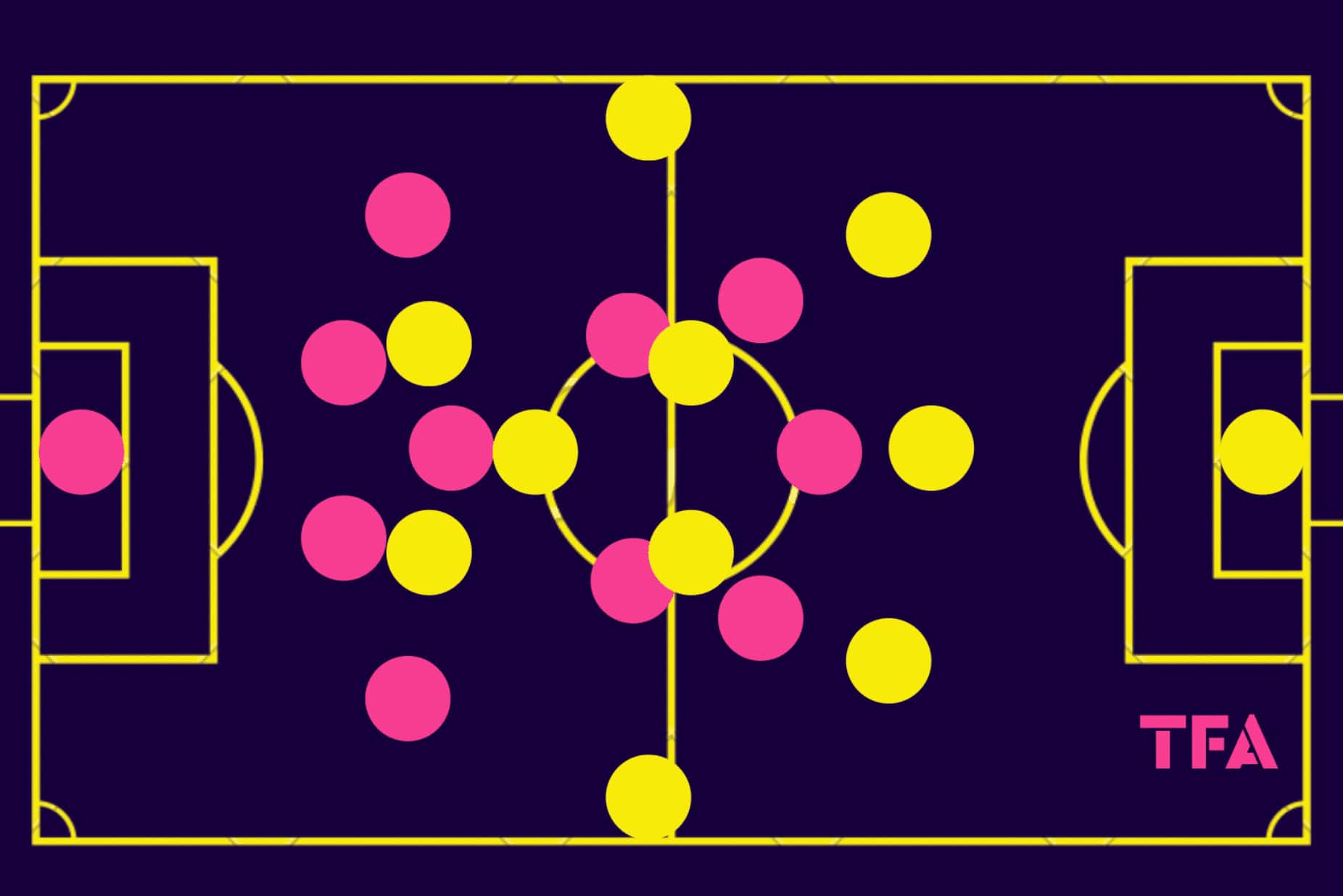
Again, our first image highlights how we can expect this matchup to broadly look in Sunday’s World Cup Final. England’s back-three will spread out while the wing-backs advance to sit on either side of the midfield duo.
Spain, like England, are very aggressive without the ball — perhaps even more aggressive — and we can expect their front three to aggressively and fearlessly press the Lionesses’ back three player-to-player.
Vilda’s side will create a pentagon around the central midfield duo, limiting England’s ability to play through the middle of the park. We can expect some pathways to open up for the centre-backs to access the midfielders at times, as the Spanish forwards will press the English backline aggressively, and gaps will inevitably open up as a result.
However, Spain’s central midfielders will stick tightly to England’s, aiming to prevent them from doing anything noteworthy should they receive behind the forwards. This major midfield battle will make for truly excellent viewing, and if either side gets the upper hand in this particular battle during the match, that could well decide the game.
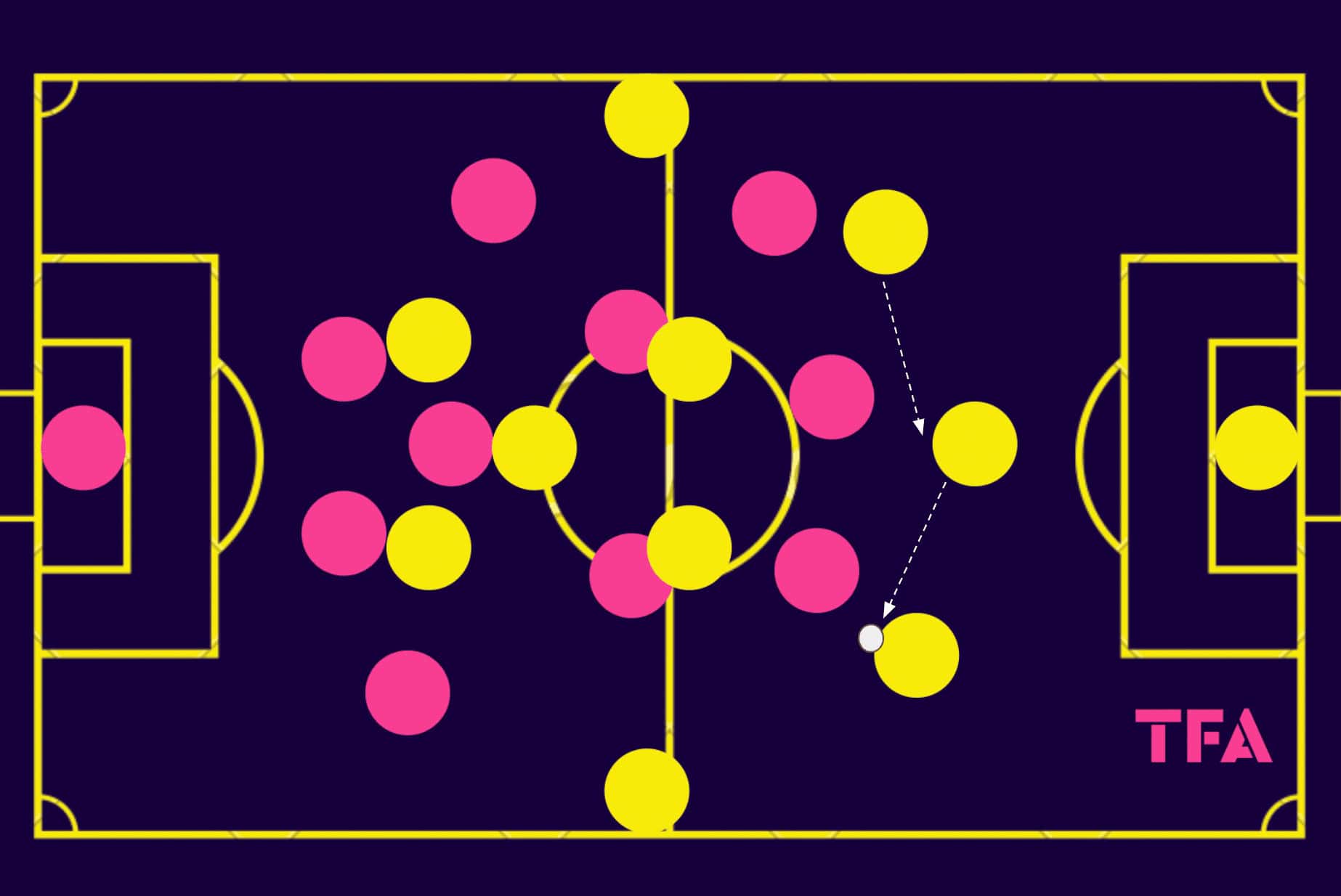
In their attempts to play past Spain’s forwards, expect plenty of passing from side to side from England’s backline as they try to move the Spanish bodies about, generating some space to progress.
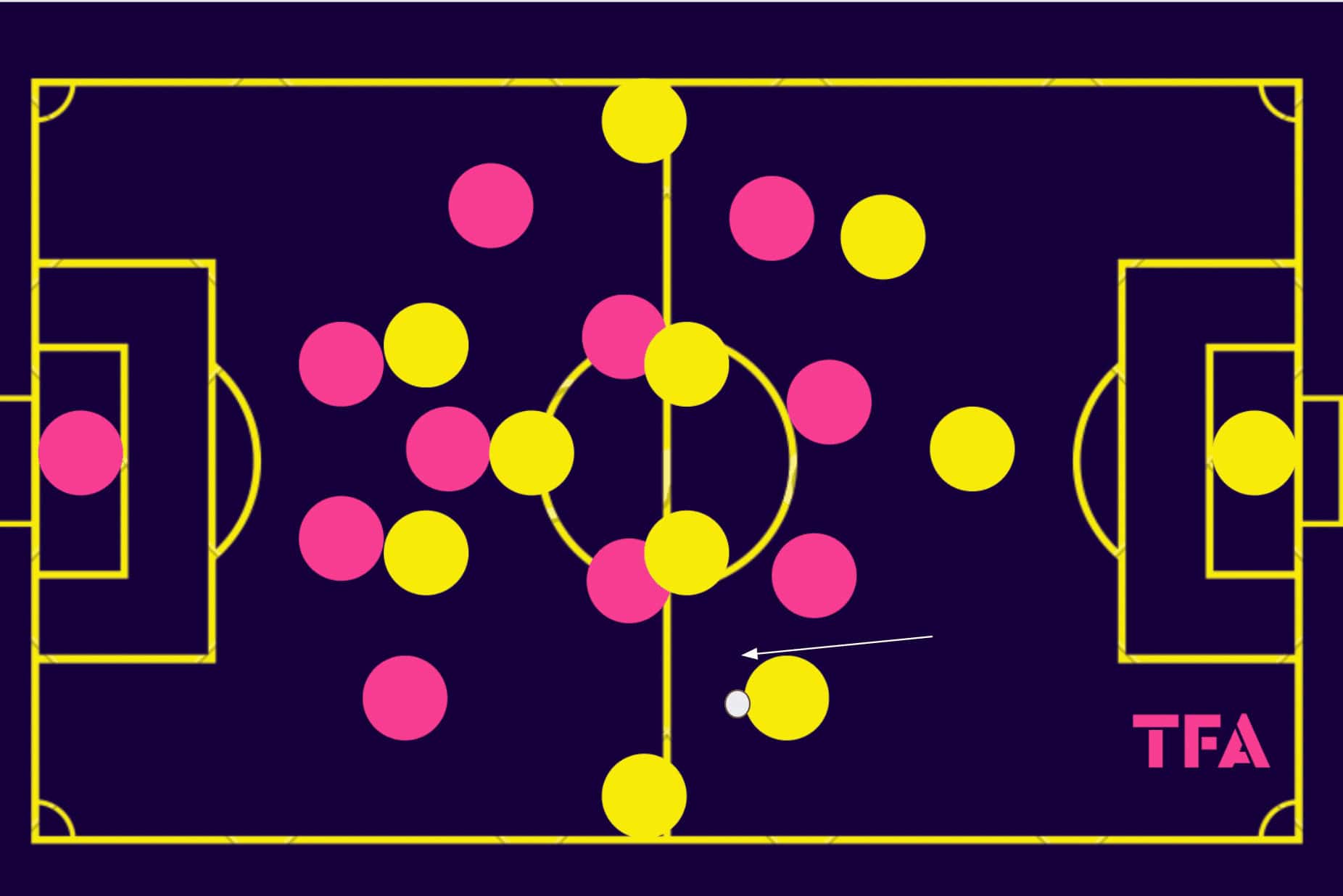
While going through the deep-lying playmaker Walsh will prove challenging due to the Spanish defensive setup, we can expect England’s three-player backline to make up for that to some extent, with the wide centre-backs likely to be tasked with driving forward on the ball into valuable central areas from where they can progress the attack.
Left centre-back Alex Greenwood will be particularly valuable in this regard, as she possesses brilliant ability on the ball, both in her carrying beyond the press and her passing, which will be a significant weapon for England in the ball progression phase versus Spain.
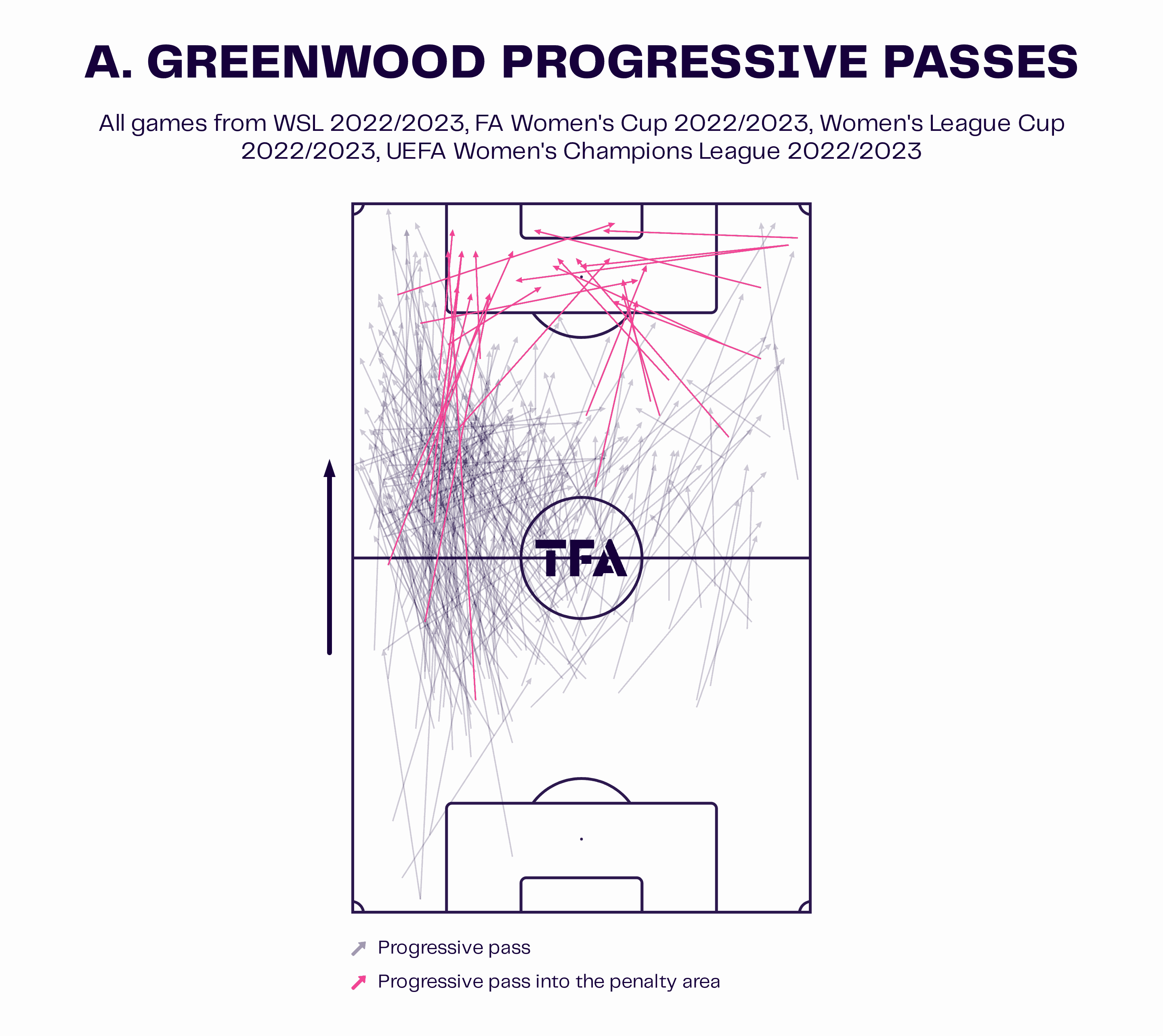
Here in figure 9, we can see Greenwood’s progressive passes over the 2022/23 season with Manchester City. The image is indicative of her ability to find attackers in valuable positions like the half-spaces, high on the left wing or even play a forward in behind directly into a potential goalscoring position, all of which Spain must be cautious of in Sunday’s game.
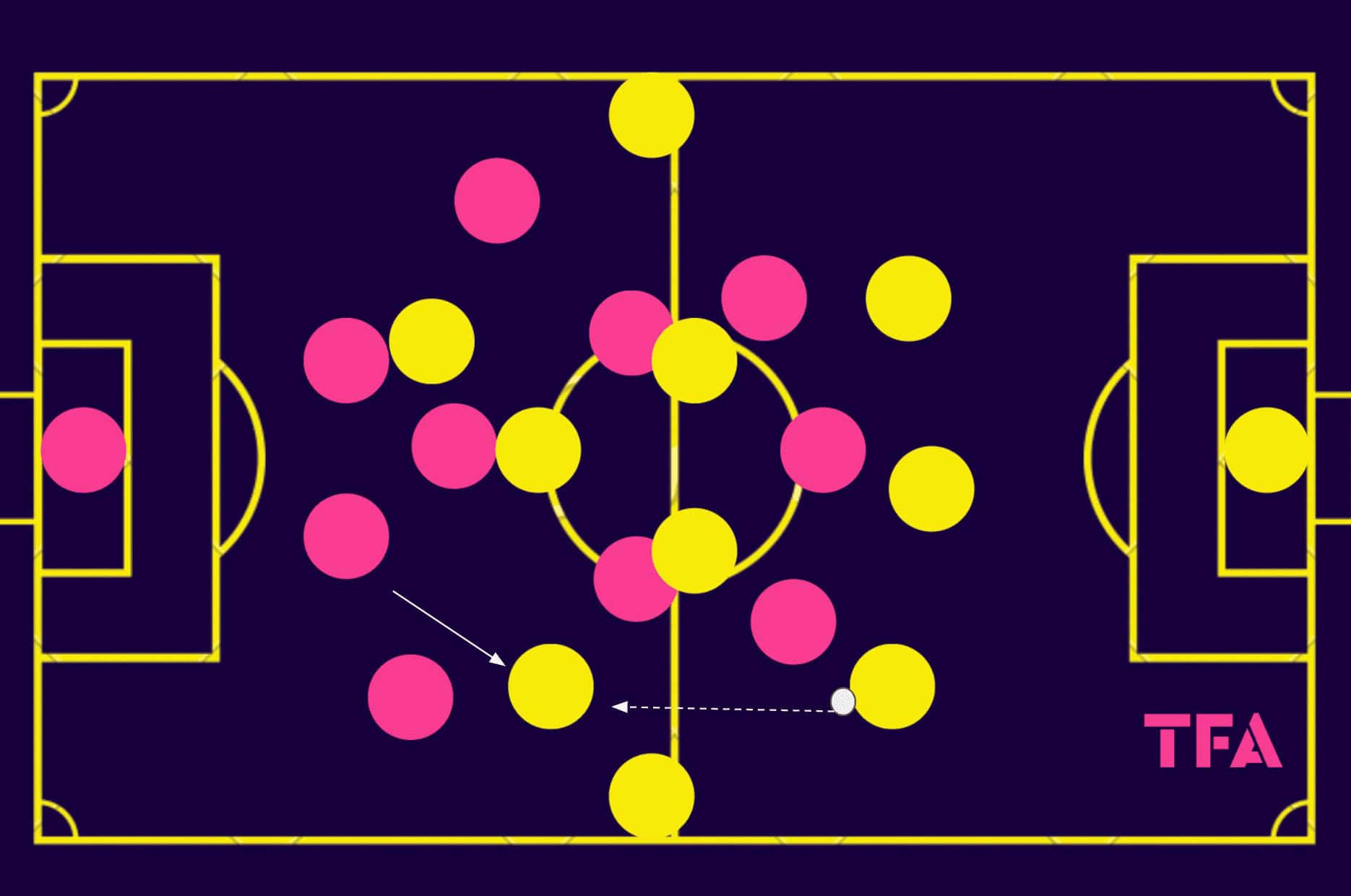
Indeed, with the centre blocked off, we can expect England’s forwards and ‘10’ to drop and look to provide a viable progressive passing option to the centre-backs; you can especially expect to see Lauren Hemp and either James or Toone — whoever plays as the ‘10’ — to drop and provide options to Greenwood as she looks to advance the Lionesses along the left-hand side of the pitch.
So, while Spain will try to hinder England’s ability to play through midfield, England will have other options to get around Spain’s defensive block and invade the final third.
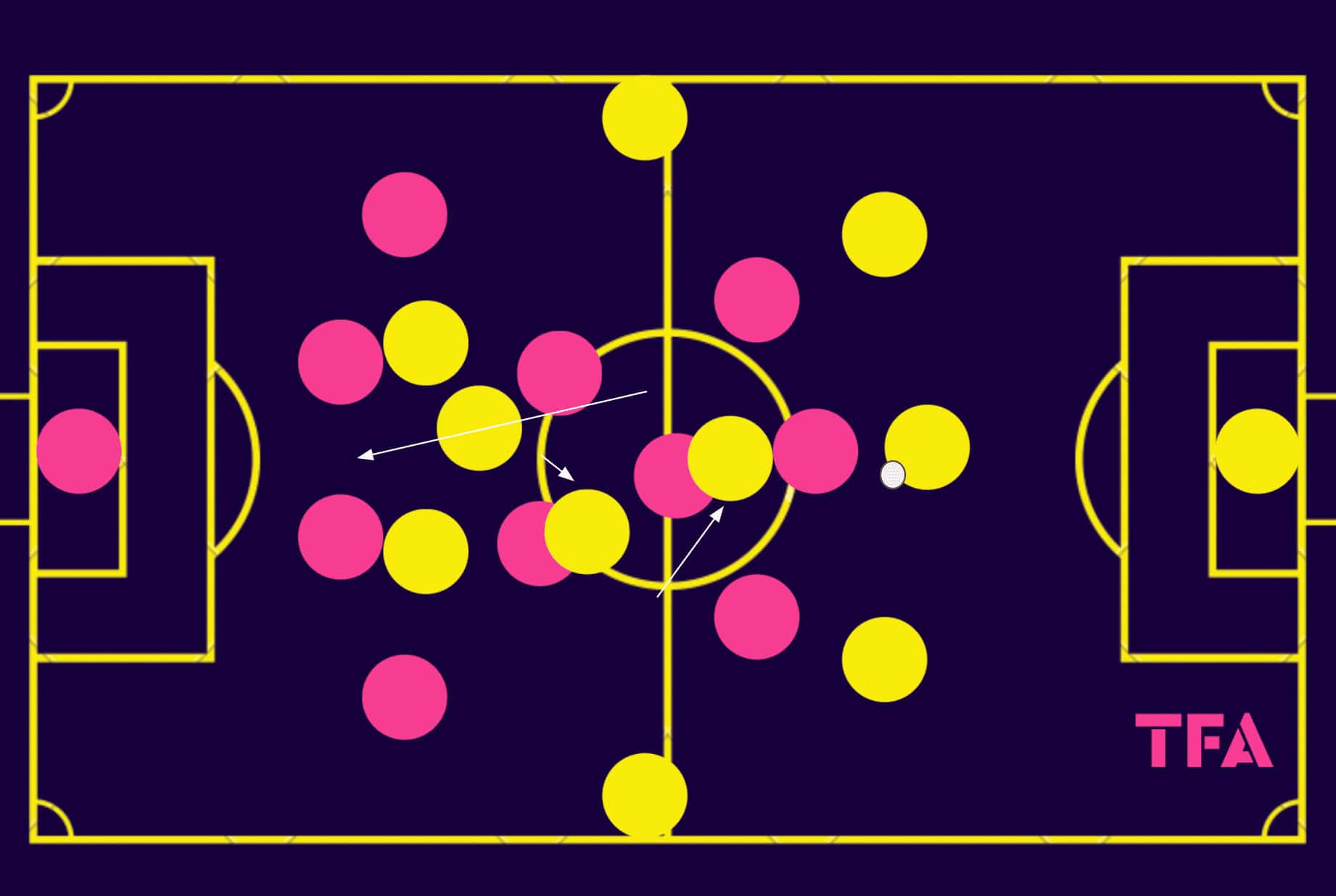
Furthermore, another way in which England may try to overcome Spain’s pentagon shape around the midfield duo is by splitting the two up, leaving Walsh deep on her own in front of the backline while Stanway drives forward, potentially providing a good option for the centre-backs to target with a direct ball in behind.
At the same time, the ‘10’ or a forward could drop to provide a different passing option, giving La Roja a real headache regarding how they could deal with the English ball progression.
We’ve seen Walsh and Stanway stagger their positioning when their team is in possession regularly over the last few games, and Stanway’s very comfortable with making these probing runs in behind, which could prove tricky for Spain if the pass is executed well to match the run.
Transitions
For our final section, we’ll spend some time focusing on how transitions could decide this game. Finals tend to be cagey affairs, and as we’ve just explained, both teams will be set up well to hinder the other’s attempts to progress through the middle of the park — the most valuable area of the pitch in terms of effective ball progression.
That’s not to say it’s impossible we get an early goal and the game opens up. Still, it’s likely transitions will be crucial for both teams in terms of their chance creation, as they will be periods when both sides have the ball without the other team set up in a settled, organised defensive structure, which could provide opportunities to get those key central creators on the ball to make things happen.
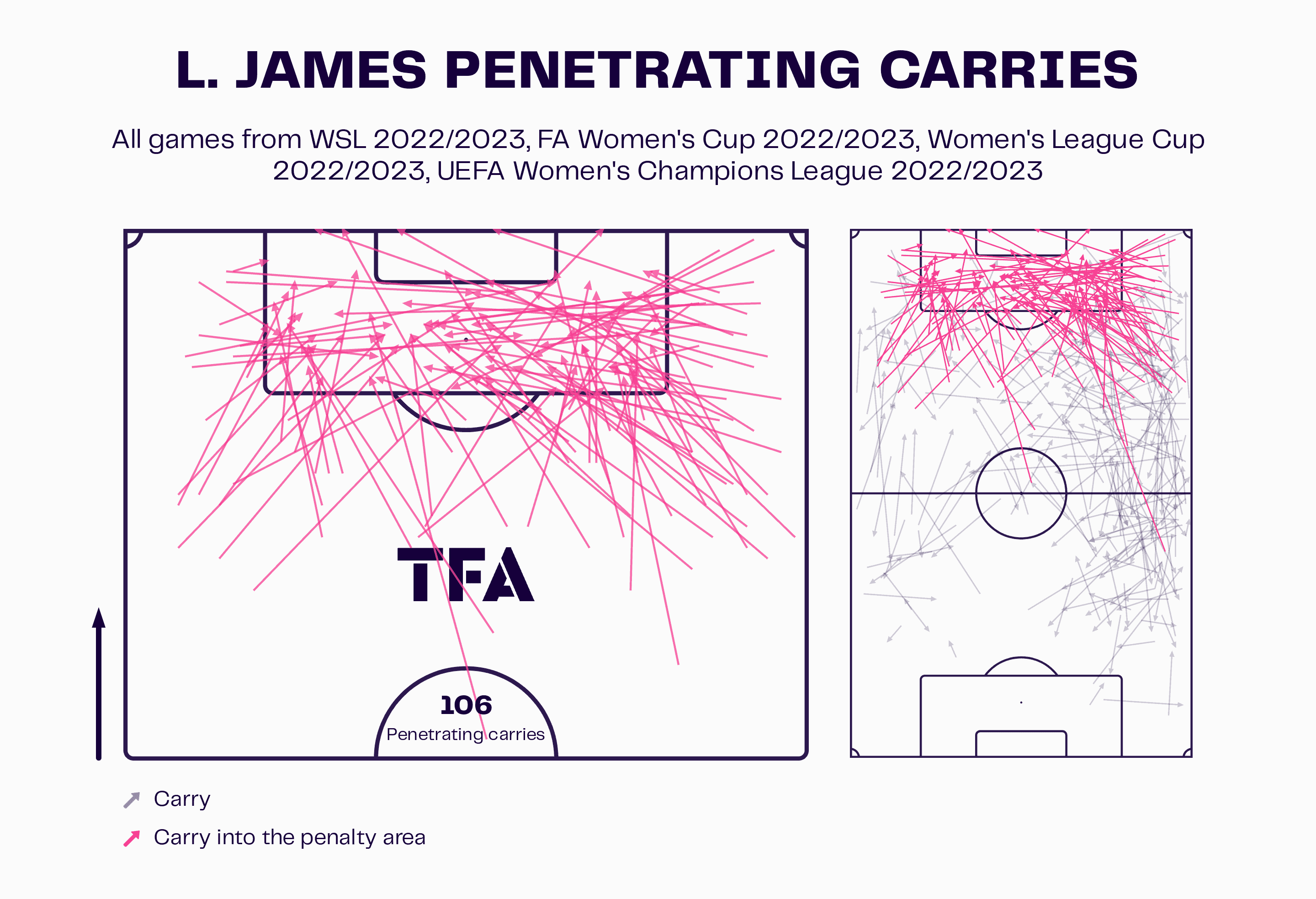
If Lauren James is back in for this game, we anticipate it’ll be transitions to attack where she really has the opportunity to shine through, as she’ll have more space to turn and take defenders on in her trademark dribbling style in this phase of play.
Furthermore, England finding opportunities to link up with the ‘10’ and forwards is vital to their counterattacks. If they find Walsh or Stanway on the ball with some space to get their head up and pick out something ahead of them in transition to attack, they could feed James the ball in a dangerous position from where she could well drive all the way into a good goalscoring position herself or at least beat a defender or two before setting up a teammate in the box.
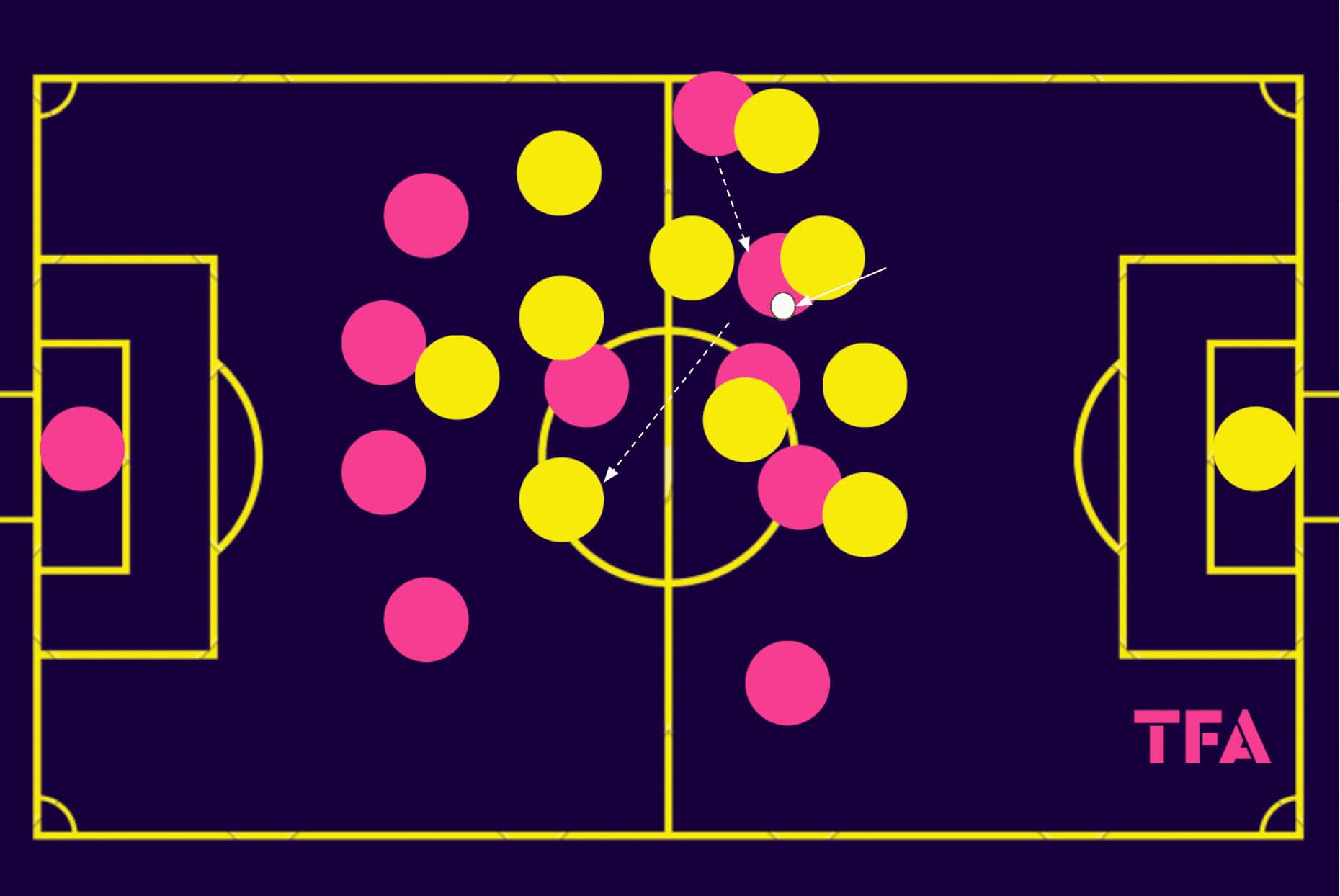
With that said, Spain’s counterpressing has been one of the highlights of their performances in this tournament under Vilda, as this example taken from their semi-final win over Sweden depicts.
Just before this image, the ball was played into Putellas in the left half-space; however, Sweden’s right centre-back dealt with the situation well, coming out and effectively closing down the space around the midfield maestra before dispossessing her and passing to the left winger — who we can see in the midfield area here.
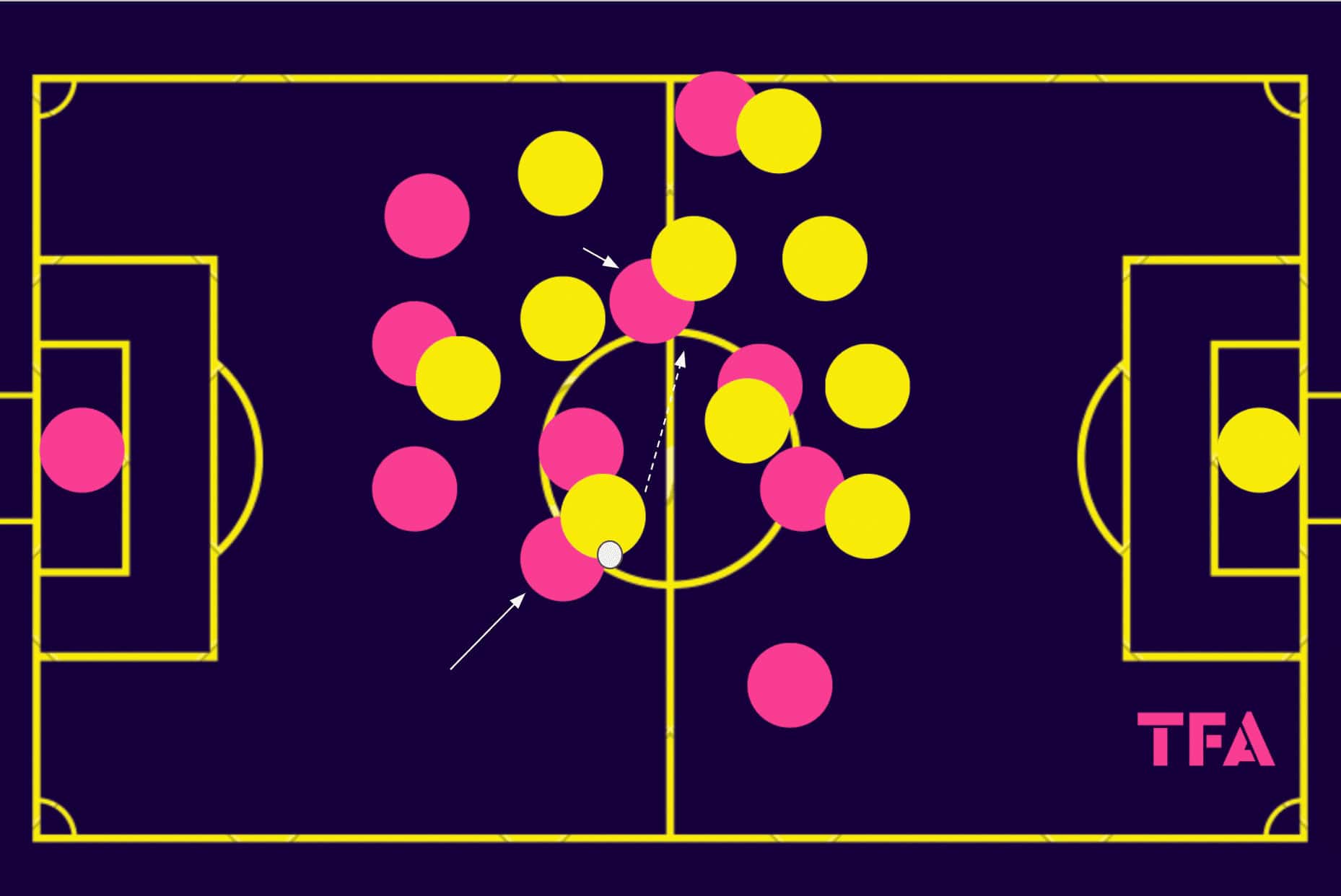
Spain’s right-back Batlle quickly closes down the receiver, giving her no opportunity to turn and continue the attack. This forces the receiver into a rushed backwards pass, which ends up getting intercepted by Putellas in midfield, creating an opportunity for La Roja to enjoy a counterattack of their own now.
This is just one example of Spain’s quick, aggressive counterpressing, but it’ll be a significant weapon in their attempts to quash England’s attacks and generate goalscoring opportunities of their own, with opportunities to find Putellas, Bonmatí, Paralluelo and Redondo in 1v1s with English defenders likely to be much more plentiful in transition than settled possession.
So, to sum it up, the transitions battle is another critical area to watch on Sunday — the game could be won or lost in those moments.
Conclusion
To conclude this tactical analysis piece, we hope we’ve given you some interesting tactical talking points to consider ahead of Sunday’s World Cup Final. Who will leave Australia and return to Europe as World Champions? That’s very difficult to say, but whoever comes out on top of these battles we’ve highlighted will have given themselves an excellent chance of doing so.





Comments